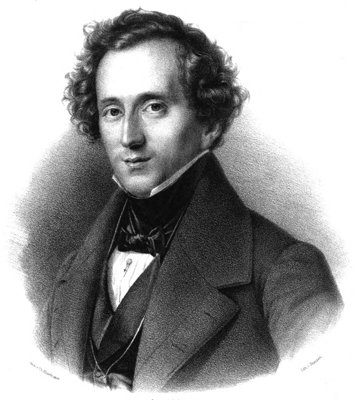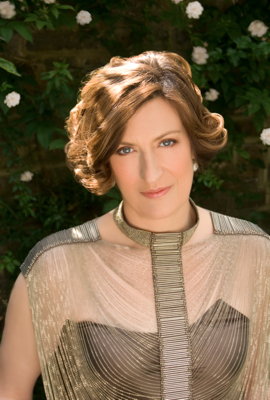|

Listening with Fresh Ears
A little-known version of the 'Italian Symphony'
plus other music by Mendelssohn and Berlioz,
from Sarah Connolly, Kati Debretzeni and the
Orchestra of the Age of Enlightenment,
intrigues MALCOLM MILLER
Whether a composer's idea and evaluation of their work is more important than the audience's was a stimulating question asked at a special post-concert discussion with a panel of players from the Orchestra of the Age of Enlightenment (OAE) after their superb programme of music by Berlioz and Mendelssohn at a well-filled Royal Festival Hall [London, UK] on Monday 20 February 2017, of which Sarah Connolly's ravishing account of Berlioz's Les Nuits d'Été was a highpoint. The focus of the debate was the little-known 1834 revision by Mendelssohn of his popular Italian Symphony No 4, which the OAE performed in place of the usual original: whilst the composer considered it an improvement, his musical sister Fanny, and many contemporaries viewed it as inferior tampering with a work premiered a year earlier.
The opportunity for the audience to 'listen with fresh ears' as invited by Kati Debretzeni, OAE's leader and on this occasion their dynamic conductor, afforded a wonderful chance to enjoy an intriguing alternative version of a much-loved masterpiece in a sparkling and zestful interpretation. Exposure to the composer's different approach to his musical ideas offered insight into his compositional processes, evident in radical reworking of melodies, textures and particularly structures, responding perhaps to Beethovenian models, as in the overlapping trio and minuet sections of the classically-proportioned third movement.

Felix Mendelssohn (1809-1847) in 1837, lithograph by Friedrich Jentzen (1815-1901), after a painting by Theodor Hildebrandt (1804-1874). Click on the image for higher resolution
|
Most of the revised changes affected the last three movements, a response to critical comments by Mendelssohn's contemporary Ignaz Moscheles following the symphony's 1833 London premiere by the Royal Philharmonic Society (RPS) who commissioned it. Most noticeable was the smoothing out of the second movement theme's contour, delicate ornaments omitted, and lacking some richness of harmony; at the same time proportions were elongated through more repetition, and certain points of harmonic tension over-repeated as if to exaggerate an effective chord in the original. Indeed some beautiful effects of the original appeared belaboured to the point of predictability. On the other hand, some changes showed imaginative touches, like the adaptation of the falling chromatic staccato string passage to a more melodic shape at the end of the slow movement, over the walking bass; and similarly intriguing were the overlapping textures linking trio and minuet in the third movement. Numerous gestures within the textures of each movement were omitted, making the revision quite distinctive, if not always persuasive as improvements.
Whilst some audience members would have longed for the original, some clearly enjoyed the OAE's engaging, involving account for the sheer interest and explorative curiosity into a little known version that adds to our understanding and appreciation, in a similar way to multi-versions of works like Beethoven's Leonore Overtures or Christopher Hogwood's discoveries of versions of The Hebrides Overture some years ago. And the discussion was a novel and fruitful forum in which to hear the views of both players and audience.
Mendelssohn and Berlioz's shared vision of Romantic ideas, the mutual influence of soundworlds, and their friendship forged through correspondence and significant meetings, formed the focus of a fascinating pre-concert talk by Dr Robert Samuels, Senior Lecturer at the Open University, with whom OAE have developed a fruitful partnership recently to research and promote seldom-heard composers and works. Samuels' entertaining, erudite discourse was boldly illustrated in a concert programme which began with Mendelssohn's folk-inspired overture The Fair Melusina, an eloquently programmatic work composed in 1833 and premiered by the RPS in 1834 shortly after the Italian Symphony. The OAE projected the relaxed bubbly arpeggio melody depicting the watery subject with radiant voicing of the lighter nineteenth century woodwind, clarinets, and flutes, over delicate string textures. In general the translucence of the period sonorities came across vividly in lighter textures, contrasted by the electric, galloping second subject, clearly taken, perhaps questionably so, at a much faster tempo. Lovely oboe solos and sprightly fugatos drew incisive energy throughout the sonata design, leading to a heightened sense of narrative in the dénouement, where the yearning 'third' theme finally found its mark, reaching in richly passionate string arcs before the calm resolution.
A rewarding rarity to launch the second half was Rêverie et caprice, a Romance for violin and orchestra adapted in 1841 from a two-part aria excised from the 1838 opera Benvenuto Cellini due to the singer's dislike of it. As a concert piece, there was plenty of opportunity here for broad melodic expression and display, portrayed over the idiosyncratic palette with impressive virtuosity by Kati Debretzeni combining the roles of conductor and soloist.

Kati Debretzeni. Photo © Joe Plommer. Click on the image for higher resolution
|
The centrepiece and highlight of the evening was Berlioz's Les Nuits d'Été, sung by the inimitable, outstanding lyrical mezzo-soprano Sarah Connolly, greeted enthusiastically as she entered on stage in a flowing silver and coloured gown. Her beautifully shaded, finely honed shaping of each phrase highlighted the beauty of Berlioz's settings of Theophile Gautier's poems of love and loss, richly coloured through Berlioz's inspired and unexpected instrumentation, dating mainly from 1856, fifteen years after the piano voice originals. Especially enthralling was the interaction with a chamber like transparency of the orchestration, for instance the dialogues in the airy 'Villanelle', where Sarah Connolly's elegant vocal contours interacted with soloistic cellos, woodwind and horns, her tone emphasising the voluptuous resonance of 'Pour parler de nos beaux amours'.

Hector Berlioz (1803-1869). Painting by André Gill (1840-1885). Click on the image for higher resolution
|
The atmospheric mood painting was compelling in the four slow central songs, poetic eloquence matched in the nuances of vocal shading and wisps of string, and occasional horn textures. Especially memorable was the suspense-filled voice and clarinet duet at the end of 'Le Spectre de la Rose', the poignant refrain of 'Sur les Lagunes', and the slowly falling scale in voice darkly dovetailed by low woodwind and the clarion call of 'L'absence', the first to be orchestrated, in 1843. The contrasting transition from the gently sighing dissonances of 'Au Cimetière' to the brighter, livelier lyrical tone of 'L'ile Inconnue', which retrieves the pulsating woodwind textures and optimism of the opening song, brought the cycle to an optimistic and effervescent conclusion.

Sarah Connolly. Photo © Peter Warren. Click on the image for higher resolution
|
Audience ovations for Sarah Connolly and the entire OAE affirmed both the power and eloquence of Berlioz's cycle, and of a ravishing interpretation to savour.
Copyright © 23 February 2017
Malcolm Miller,
London UK

|

